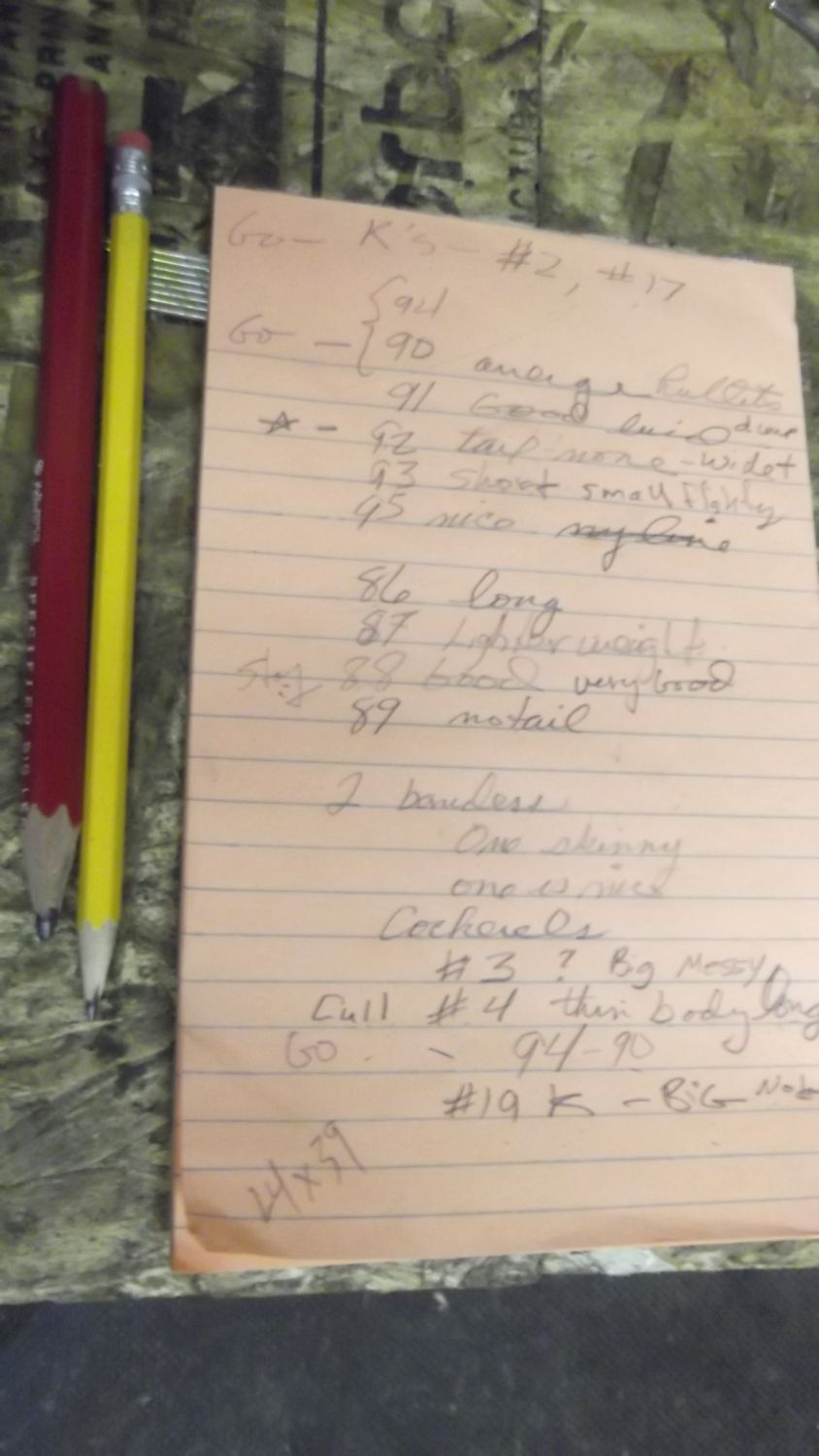- Thread starter
- #4,181
Most of this year's crop of juveniles are now old enough to also check "hip bone" distance. Pick up the birds and settle them into your classic 4-H hold, on your left arm perhaps. Then, using your right hand, use your thumb and middle finger to stretch the distance, feeling the two "bumps" on rear of the bird, back in the saddle area. Write down that distance, say 3", for each bird according to it's ankle number.
Move on to the next hatch mate of the same sex. Write down the distance, the width of the rear of the bird between the boney bumps at the rea. Proceed through all the birds of that hatch.
I record this data on each bird at 8 weeks, 12 weeks and 16 weeks. While the bird is in hand, spread the wings and feel the keel bone for straight formation. Run your hand down the spinal bone as well looking for any "hump back" conditions.

Make any other pertinent notes. Wonky comb, crow head, beak too long, small thin shank bone, etc. Bob Blosl always taught that in 90% of the cases, your outright "leader" at 8 weeks will likely still be your leader at 12 and 16 weeks. Bob was pretty spot on, in my experience. Those front runners, larger boned birds just don't seem to get caught by their less impressive hatch mates.
Move on to the next hatch mate of the same sex. Write down the distance, the width of the rear of the bird between the boney bumps at the rea. Proceed through all the birds of that hatch.
I record this data on each bird at 8 weeks, 12 weeks and 16 weeks. While the bird is in hand, spread the wings and feel the keel bone for straight formation. Run your hand down the spinal bone as well looking for any "hump back" conditions.
Make any other pertinent notes. Wonky comb, crow head, beak too long, small thin shank bone, etc. Bob Blosl always taught that in 90% of the cases, your outright "leader" at 8 weeks will likely still be your leader at 12 and 16 weeks. Bob was pretty spot on, in my experience. Those front runners, larger boned birds just don't seem to get caught by their less impressive hatch mates.





